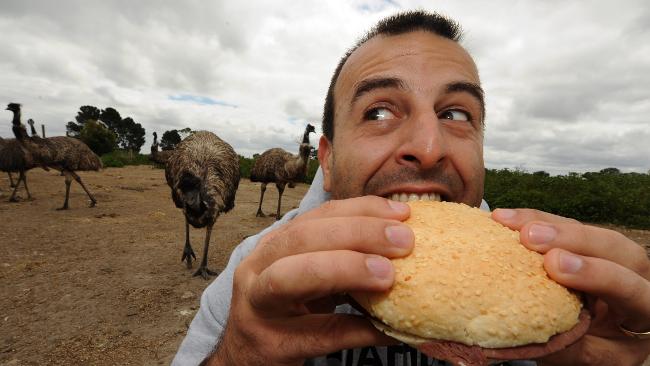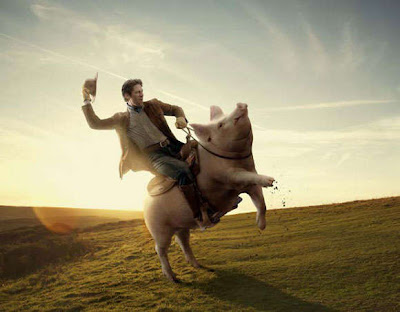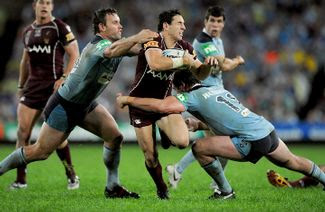Even though they don't
hunt in packs, the Australian stinging trees are pretty vicious. The sting is delivered through tiny
silicon hairs that cover the leaves and the fruit of the plant. You can think of the silicon hairs as tiny fibres of
non-transparent glass. The only way you can handle the leaves safely without getting stung, was to wear incredibly thick and bulky welding gloves. These silicon hairs penetrate your skin, and then break off. They're so tiny, that often the skin will close over the hairs. So sometimes,
once you've been stung, you can't remove the stinging hairs.
There are
six species of stinging tree in Australia, but only two of them are the tall woody types - the other four are lowish shrubs. They live along the
East coast of Australia, from Cape York in the north, to Victoria in the south. They grow only if they get both strong sunlight, and protection from the wind. So you'll see them
along tracks, the banks of creeks, and where the rainforest canopy has been broken by a falling branch or tree.
The silicon hairs cause pain, because they
carry a neurotoxin. One scientist, Oelrichs, purified the poison and injected himself with it and suffered intense pain. He proved that the toxin, not the silicon hairs, caused the pain. If you have stabbed yourself with the hairs, you can release the neurotoxin from the hairs by heating or cooling your skin, or just touching it. This neurotoxin is very stable. Experiments have been done with hairs that were
collected nearly a century ago, and they can still cause pain.
Hydrochloric Acid treatment was worse than the pain of the dreaded Stinging Tree.
Humans feel something between
mild irritation and intense pain and death. The pain comes immediately after touching the plant, and it gradually increases to a peak after about 20-30 minutes. The Dutch Botanist H. J. Winkler made the only official recording of
Death By Stinging Tree, for a human. It was in New Guinea, back in the early 1920s. There have been other anecdotal stories from soldiers in WW II suffering intense pain, and of
an officer shooting himself because of the unrelenting pain.
But you can suffer
even if you don't touch the plant. The plants continuously shed their stinging hairs. Stay close to the stinging trees for more than an hour, and you can get an
allergic reaction - intensely painful and continuous bouts of sneezing. You can even get
nose bleeds from these silicon hairs floating in the air.
TREATMENT
The best way to get the hairs out of you, once you've
accidentally got stuck on a stinging tree. Is to firstly not to even think about rubbing the affected area with the sap of nearby trees, or the ground-up roots of the tree that stung you. No, it was a student from James Cook University in Cairns who discovered the best way - you can remove these hairs with a
hair-removal wax strip. In fact this is now the official recommendation in a
Queensland ambulance journal.
Treatment is done by,dressing
stings with a hydrochloric acid solution, before waxing the affected area of skin. Maybe this is effective, but it is also one way to
cause excruciating pain, and you will never seen so many
grown men screaming and crying!






















































